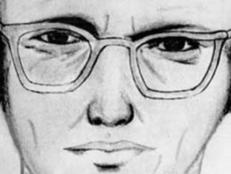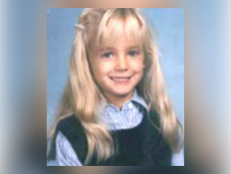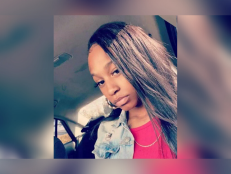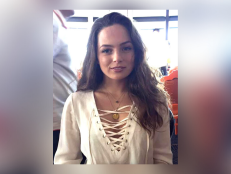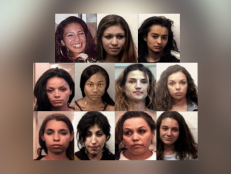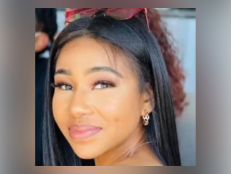Could The Manson Family Have Killed Even More Victims Than We Know Of?
The Manson Family famously slayed seven people in a two-day murder spree in August of 1969. But are there other victims connected to the cult?
![166455493 Unidentified members of the Manson Family in January 1971, in front of the California prison in which Charles Manson is being held [Jack Garofalo/Paris Match via Getty Images]](http://investigationdiscovery.sndimg.com/content/dam/images/investigationdiscovery/crimefeed/legacy/2019/08/Getty-Manson-Family-166455493.jpg.rend.hgtvcom.616.411.suffix/1565212783085.jpeg)
Unidentified members of the Manson Family in January 1971, in front of the California prison in which Charles Manson is being held [Jack Garofalo/Paris Match via Getty Images]
To casual observers of the story of the Manson Family, the grisly events of August 9 and 10, 1969, encompass the totality of the cult’s bizarre crimes — two nights of bloody violence that resulted in the deaths of seven people and one unborn child.
The massacre terrified Los Angeles and the entire country, and in many ways signaled an abrupt halt to the hippie movement’s ideals of peace and free love. A collection of wayward young adults living on a remote ranch under the spell of a hypnotic guru to whom they pledged absolute allegiance captured the attention of the nation and, once Charles Manson and several of his followers were arrested for murder several months later, that seemed to be the end of the story.
But there were other victims of the Manson Family’s twisted lifestyle: Some are confirmed, some are the subject of ongoing speculation. To explore the Family’s lesser-known and other possible crimes shows that Manson and his followers had a pattern of violence that spanned much longer than two hot summer nights in August 1969. The bloodshed lasted for months and possibly even years, including after Charles Manson and several of his followers were sentenced to life imprisonment.
Charles Manson was an ex-convict who had spent time in and out of correctional facilities for most of his life. When he was released from prison in 1967 at the age of 32, Manson dove head-first into California’s hippie culture and, using the powers of influence and manipulation he had learned from years behind bars, assembled a following of young men and women who were looking for a place to belong. But under his outwardly peaceful appearance and his supposed kinship with the hippie movement, Charles Manson was a career criminal who used violence when necessary, and this practice was passed on to his young devotees as well.
During the month before and the month after the Tate-LaBianca murders, the Manson Family allegedly committed a number of violent crimes. Allegedly, two resulted in deaths, and one person escaped with his life, much to Charles Manson’s surprise.
Bernard “Lotsapoppa” Crowe was a trumpet player and a drug dealer who had an unfortunate run-in with the Manson family five weeks before the infamous Tate-LaBianca murders. Manson was allegedly attempting to stockpile money so he and the Family could survive the upcoming "Helter Skelter" race war that he constantly preached about.
![Mug shots of Tex Watson [Wikipedia]](http://investigationdiscovery.sndimg.com/content/dam/images/investigationdiscovery/crimefeed/legacy/2019/08/Tex-Watson-Wikipedia-8082019.jpg.rend.hgtvcom.616.440.suffix/1565282292273.jpeg)
Mug shots of Tex Watson [Wikipedia]
Family member Charles “Tex” Watson had allegedly ripped off Crowe for $2,500. The intimidating drug dealer reportedly responded by saying he would kill everyone at Spahn Ranch, where the Family resided at the time, if he didn’t get his money or the drugs he was promised from Watson.
Manson arranged a meeting at Crowe’s apartment in Hollywood on July 1, 1969. During the meeting, Manson is said to have suddenly pulled a .22 caliber revolver and shot Crowe. “Lotsapoppa” played dead, and Manson fled the apartment. But the drug dealer’s friends called an ambulance, and, despite having a bullet lodged near his spine and being in critical condition for 18 days, Crowe survived. But as far as Charles Manson knew, he had killed the drug dealer.
Prosecutor Vincent Bugliosi later used Bernard Crowe as a witness in Manson’s trial, proving that the cult leader was capable of killing someone himself. Also, the gun Manson used to shoot Crowe was later used by “Tex” Watson in the Tate murders on August 9. Manson hadn't realized that Crowe was still alive until after he was arrested for the Tate-LaBianca murders. Manson was walking through a court building with a guard when, to his surprise, he passed Crowe in a hallway. Lotsapoppa was in court for a marijuana charge. Manson did a double-take when he saw the drug dealer and said, “Sorry I had to do it, but you know how it is.”
Less than a month after the attempted murder of Lotsapoppa, Manson and his followers struck again. Gary Hinman, 34, was a music teacher and a part-time drug dealer who was befriended by Family member Bobby Beausoleil. Hinman became an associate of the Family because he was willing to let people crash at his house at a moment’s notice and he owned two cars.
Manson wanted Gary Hinman in his orbit because he believed he might have connections in the music industry. Manson fancied himself a talented singer-songwriter and his ultimate goal was to get a record deal. He had also befriended Dennis Wilson of The Beach Boys for the same purpose. By late July 1969, it was becoming obvious to Charles Manson that his dreams of becoming a famous singer were not going to pan out.
Manson allegedly directed Beausoleil to shake down Hinman and demand that the music teacher give them $1,000. Beausoleil was armed with a gun and a knife and was accompanied by Family members Susan Atkins and Mary Brunner. Hinman refused, and Beausoleil beat him and held him hostage.
![Mug shot of Bobby Beausoleil [California Department of Corrections]](http://investigationdiscovery.sndimg.com/content/dam/images/investigationdiscovery/crimefeed/legacy/2019/08/Bobby-Beausoliel-CA-Dept-of-Corrections-8082019.jpg.rend.hgtvcom.616.347.suffix/1565282568846.jpeg)
Mug shot of Bobby Beausoleil [California Department of Corrections]
Hinman eventually agreed to turn over the pink slips to his two cars, but Manson was not satisfied with that outcome and he decided to go to Hinman’s house himself to look for money, armed with a sword. When Hinman protested that he had no money, Manson slashed his ear and almost cut it in half. Manson then left and told Hinman that he had to give everything he had to Beausoleil … or else.
For the next two days, Hinman was kept captive and was beaten repeatedly. Finally, on July 27, 1969, Beausoleil stabbed and killed Hinman, ensuring that he wouldn’t talk to police. Manson had been to prison so many times that he knew another sentence would be the maximum. Beausoleil was arrested only a few days before the Tate-LaBianca murders when one of Hinman’s cars he was driving broke down, and highway patrolmen pulled up and ran the license plates. Beausoleil was convicted of Hinman’s murder and is still in prison to this day.
After the infamous orgy of violence on August 9 and 10, Manson allegedly decided that another person in the Family’s universe had to be killed. Donald “Shorty” Shea was a 35-year-old Hollywood stuntman who worked as a ranch hand at Spahn Ranch. Shea was not a fan of Manson or his Family members and he believed, correctly, that the group, and their leader in particular, were taking advantage of the elderly owner of the property, George Spahn.
Paranoia ran high at Spahn Ranch after the Tate-LaBianca murder because of how much publicity the crimes received in newspapers and on television. A week after the murders, on August 16, Spahn Ranch was raided by police. But this raid had nothing to do with the murders: Police believed the Family was responsible for a number of car thefts.
Manson immediately suspected that “Shorty” Shea had tipped off police. Family member Squeaky Fromme had allegedly previously reported to Manson that she’d heard Shea and ranch owner Spahn have a conversation in which Shea told the old man that he would personally kick Manson and his followers off the land.
Ten days after the raid, Shea got into a car with Manson and Family members Bruce Davis and Steve “Clem” Grogan, was driven to a remote part of Spahn Ranch and tortured, killed, and dismembered. Shea’s remains were not discovered until 1977. The message was clear: Anyone who crossed Manson and the Family or who could potentially be a snitch had to die.
In addition to those known victims, there are others who died under suspicious circumstances. John Philip Haught, 22, known as “Zero,” was a Family member who was found dead with a bullet in his head in a house near Venice beach on November 5, 1969.
Manson had always been suspicious of Zero and he'd considered him “a weakling.” Family members at the house, including Bruce Davis, told police that Zero had been playing Russian Roulette, despite the fact that the gun had seven live rounds and one spent round in the chamber. Was Zero silenced for being a weak link and knowing too much in the months after the Tate-LaBianca murders?
Another mysterious murder potentially connected to the Manson Family was that of 19-year-old Reet Jurvetson. The young woman from Toronto, Canada, went to Los Angeles in the fall of 1969 and was murdered a few weeks later in November. Jurvetson had been stabbed more than 150 times and was categorized as a Jane Doe for 46 years until her body was finally identified in 2015.
![Reet Jurvetson [Los Angeles Police Department]](http://investigationdiscovery.sndimg.com/content/dam/images/investigationdiscovery/crimefeed/legacy/2019/08/Los-Angeles-Police-Dept-Reet-Jurvetson-S8082019.jpg.rend.hgtvcom.616.822.suffix/1565282793536.jpeg)
Reet Jurvetson [Los Angeles Police Department]
Prosecutor and Helter Skelter author Vincent Bugliosi theorized that Jurvetson might have been murdered to keep her quiet because she had witnessed the murder of Zero in November 1969. Her case remains unsolved.
Charles Manson’s own attorney was not even safe from an early death. Ronald Hughes was a lawyer who represented Manson and disappeared in November 1970 during a recess in the Tate-LaBianca trial. Hughes took a camping trip during the recess and failed to show up in court when the trial reconvened on November 30. Hughes’ body was not found for several months, when it was discovered in Ventura County in a remote area. Although it appeared that Hughes drowned, some believed that the Family had killed the attorney. Family member Sandra Good said that Hughes’ death was “the first of the retaliation murders."
Even after Manson and others were arrested and sent to prison for the Tate-LaBianca killings, mysterious deaths continued to surround what remained of the Manson Family. Squeaky Fromme and other members fought to keep their leader's message alive and to keep the Family together.
In 1972, a Vietnam veteran named James Willett and his wife, Lauren, became acquainted with Family members. Within a few months, the Willetts were dead. James had been murdered and buried in a shallow grave. Lauren was found buried in the basement of a home in Stockton, California. The people arrested for the crimes included Family members Nancy Pitman and Fromme, in addition to others. They claimed that Lauren Willett, just like Zero, had died playing Russian Roulette. Pitman received a five-year sentence, but Fromme was released due to a lack of evidence. Police reportedly believe that Lauren was killed to keep her quiet after she learned her husband had been murdered.
![Lynette "Squeaky" Fromme as a junior in high school, 1965 [Wikipedia]](http://investigationdiscovery.sndimg.com/content/dam/images/investigationdiscovery/crimefeed/legacy/2019/08/Wikipedia-Squeaky-Fromme-S8082019.jpeg.rend.hgtvcom.581.726.suffix/1565282925994.jpeg)
Lynette "Squeaky" Fromme as a junior in high school, 1965 [Wikipedia]
Squeaky Fromme remained devoted to Charles Manson even when it was obvious he would never be a free man again. Fromme also reportedly wanted the world to know that Manson’s message was not about murder and mayhem, but rather his love of Mother Earth and concerns about the environment. She needed to get the world's attention and gain a platform. On September 5, 1975, President Gerald Ford made the short walk from his hotel to the state capitol in Sacramento, California. Ford was flanked by Secret Service agents as he walked by a small crowd of onlookers that included Fromme. When the President was close enough, Fromme raised a semiautomatic handgun from beneath her robe. The would-be assassin was tackled by Secret Service agents. Fromme said, “Can you believe it? It didn’t go off!” as she was led away by authorities. Fromme served almost 34 years in prison for the assassination attempt and was released on parole in 2009.
These are just a few of the many examples of possible crimes committed by the Manson Family. It’s highly unlikely that we will ever know the true number of deaths that the Manson Family was ultimately responsible for. The members of the cult were so totally devoted to their leader that they were willing to follow his every command, as was evidenced in the high-profile Tate-LaBianca killings and other crimes. How high was the body count?
Although Charles Manson died while incarcerated in November 2017, the fascination with him and his Family remains in the public eye and will continue to for years, whether we get more answers or not.
For more, watch the "Manson Family Murders" episode of Investigation Discovery's People Magazine Investigates: Cults on ID GO now!
Read more: People, People (2), ListVerse, Manson: The Life and Times of Charles Manson by Jeff Guinn, Helter Skelter: The True Story of the Manson Murders by Vincent Bugliosi and Curt Gentry, Cielo Drive, Cielo Drive (2), Cielo Drive (3), Huffington Post, The New York Times, Kentucky.com

